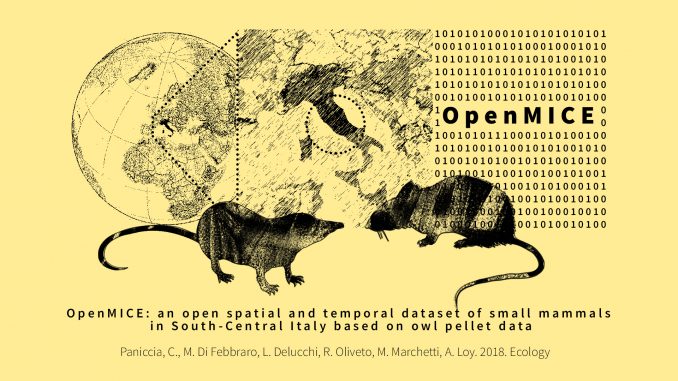
OpenMICE: an open spatial and temporal dataset of small mammals in South‐Central Italy based on owl pellet data
Chiara Paniccia Mirko Di Febbraro Luca Delucchi Rocco Oliveto Marco Marchetti Anna Loy
First published: 06 September 2018 https://doi.org/10.1002/ecy.2506
Abstract
The use of database technologies as a tool for implementing data for quantitative ecological studies and biodiversity conservation planning has recently attracted the attention of the biological community. Despite the fact that the number of biodiversity datasets is quickly rising, online databases of small mammals are still scarce, especially for the Mediterranean ecosystems. We implemented the first standardized and accessible georeferenced European database of small mammal occurrences, abundances and functional traits. Data derived from owl pellets were obtained from different sources including original field surveys, publications, gray literature, existing databases and museum collections. The OpenMICE database covers the years 1972 to 2017 and includes nearly 50,000 individuals from 23 species (13 Rodentia and 10 Eulipotyphla) at 190 sites of South‐Central Italy. Our specific goals in compiling this dataset were as follows: (1) to make widely available data usually accessible to a restricted audience; (2) to identify the gaps of knowledge about small mammal communities and guide future sampling and conservation efforts; and (3) to gain a first insight into small mammal diversity and abundance in the study area. The potential applications of our spatial relational database are manifold: among others, from individual‐based to community‐based models as potential indicators of environmental changes at different geographical scales. Given the long‐term support for data storage, the OpenMICE database could be further expanded to include other geographical contexts, and implemented with new information and traits. There are no copyright restrictions for research and/or teaching purposes. We would appreciate that researchers cite this paper if using all or part of the dataset. We also request that researchers and teachers inform us of how they are using the data. We intend to keep it up to date as novel studies become available.

Commenta per primo